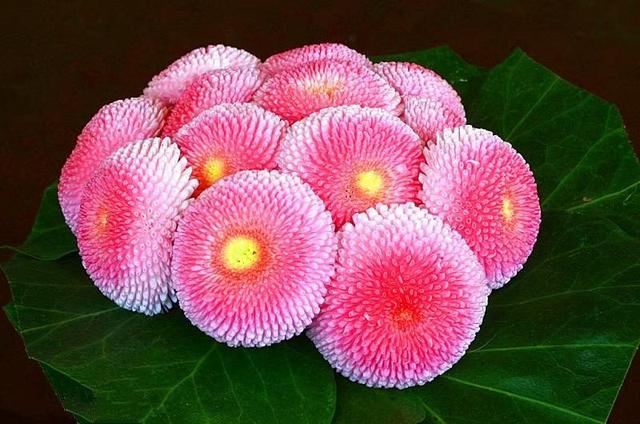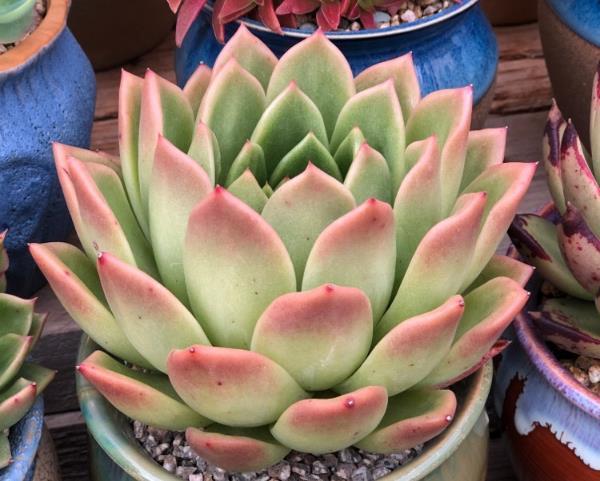Do you also need to use genetically modified genes in papermaking? Yeah, you read it right.

Speaking of myrtle, many people will think of the ghost of the young schoolgirl floating around the toilet in the Harry Potter series. Strictly speaking, the unfortunate Myrtle student's name comes from the Mediterranean plant Myrtus communis, not from Rhodomyrtus tomentosa, a native tree species in southern China. But it is clear that Myrtle is more like a fantasy female name than a dry mahogany.
Eucalyptus (Eucalyptus grandis), which is to be introduced today, is a plant of the myrtle family.
Big eucalyptus, like its name, is very tall. Picture: Poyt448 Peter Woodard / wikimedia
Large families mostly in the southern hemisphere
Eucalyptus, mahogany and myrtle are all myrtle plants. In terms of the number of species, myrtle ranks the eighth largest family of angiosperms in the world, with more than 6000 known species. For the northern hemisphere, however, this is a small family for a simple reason: the myrtle family is mainly distributed in tropical and temperate regions of the southern hemisphere. As the northern margin of the distribution of myrtle family, there are only more than 100 species in China. As for Europe, there is only one kind of mahogany in the myrtle family, and all the others are introduced.
Only when you come to Australia, the largest distribution center of the myrtle family, can you fully see the diversity of the eighth largest family in the world-there are red layers of inflorescences like brushes, fish and willow plums with flowers like plum blossoms, and naturally all kinds of eucalyptus trees.
Mahogany (left) and Myrtle (right). Picture: Forest & Kim Starr & Fakhruddin Hamzah / wikimedia
Red thousand layers (left) and fish willow plum (right). Picture: Wula Cross Krypton & Krzysztof Ziarnek, Kenraiz / wikimedia
Eucalyptus belongs to the genus Eucalyptus. It is now known that there are more than 1000 species, accounting for 1/6 of the myrtle family. Except for a few species also found in Papua New Guinea to Indonesia in the north of Australia, all of them are Australian specialties.
Geographical distribution of Eucalyptus grandis in Australia. Picture: HelloMojo / wikimedia
Eucalyptus is more than trees.
In fact, there is a wealth of diversity within eucalyptus trees. For example, some eucalyptus trees distributed in arid areas are low shrubs, so it is difficult to think that they are also eucalyptus trees. Indeed, eucalyptus is always a tall tree in people's mind, and there are probably a few koalas munching leaves on it. This is an irreversible stereotype.
However, even these big eucalyptus trees, which are too high to touch branches, are still varied. Some eucalyptus trees like cool, some like warm, some like wet, and some ask for dryness. These ecological differences determine that when introducing eucalyptus trees in other parts of the world, they need to choose species that are suitable for the local climate. Eucalyptus, for example, belongs to tropical eucalyptus, and naturally it is mainly introduced to tropical areas, such as Brazil, which is about the same latitude as Australia.
The brown bark of Eucalyptus grandis near the ground is rough, showing a kind of skirt effect. Picture: Casliber / wikimedia
Why do other countries introduce eucalyptus trees? Because they are not only good wood trees, but also good pulp trees. As far as pulp is concerned, this year's species calendar says when it comes to reeds that wood pulp made from trees is better than straw pulp from herb stalks because it has a low content of impurities (especially without the siliceous material that is common in straw pulp) and good fiber quality. In pulp trees, the fiber quality of eucalyptus is better.
Not only that, many eucalyptus trees are fast-growing species, growing fast, and can be grown in a few years. Compared with some other fast-growing tree species, eucalyptus requires less water when it grows the same volume of wood. These advantages make eucalyptus an important crop.
Eucalyptus is being harvested. Picture: T. Grove, CSIRO
Transgenic is also needed in papermaking.
Yes, eucalyptus for papermaking is essentially a crop, even if it can't be eaten, even if it's a tall woody plant.
For more than a decade, environmental groups have denounced eucalyptus forests in southern China, blaming them for not growing grass and birds, for causing water levels to drop, and for planting eucalyptus trees for destroying native vegetation. However, as long as you understand the crop nature of eucalyptus, you can see that most of these accusations are unreasonable.
In Nanping Yao Township, Shangsi County, Guangxi, a kind of fluffy grass with fine branches and leaves grows under the fast-growing eucalyptus forest. in misty and rainy weather, the grass will be covered with dense dewdrops, forming a "sea of dewdrops." Photo: Liang Fuying / Oriental IC
For example, we do not accuse a wheat field or sunflower field of "no grass growing below". On the contrary, large tracts of neatly growing wheat or sunflowers have always been a favorite beauty. But why does eucalyptus "field" require rich biodiversity under the forest?
In the final analysis, we still expect too much of the artificial forest, hoping that it can not only provide high-quality forest products, but also play the ecological role of the natural forest, but also as unregulated as the natural forest. However, there is no such beautiful thing in the world.
Big eucalyptus forest. Picture: Tatiana Gerus / wikimedia
Eucalyptus, as a crop, now has the same problem as some other crops-genetically modified. Brazil is a big country in the cultivation of pulp eucalyptus, which mainly cultivates the hybrid varieties of Eucalyptus grandis and E. urophylla. Brazil's Fibria and Suzano are also the world's first and second largest eucalyptus pulp producers (currently, the two have agreed to merge to form a larger pulp "giant"), and a biotech company owned by Goldfish has developed the only genetically modified eucalyptus strain in the world that is allowed to be grown commercially. In fact, it is also the first genetically modified strain of woody plants allowed to be grown commercially in the world.
The strain was transferred into a gene from Arabidopsis thaliana called CEL1. The enzyme expressed by this gene can be involved in the decomposition of existing cellulose molecules in the cell, so that the old cellulose can be quickly used to synthesize new cellulose as the cell grows, thus speeding up the growth of eucalyptus. Of course, such a genetically modified variety has also met with opposition from people from all walks of life, although it received a license from Brazil in 2015 (but has not yet obtained any license from the people's Republic of China). But it doesn't seem that easy to promote.
Pulp produces "Big Mac" paper rolls produced by "Big Mac". Picture: latinlawyer.com
At present, the demand for eucalyptus pulp in China is still growing. Both high-quality publishing paper and high-quality paper towels need eucalyptus pulp to make. At the same time, eucalyptus forests in southern China will continue to develop in the midst of controversy. However, does the current domestic public opinion environment allow our scientists to also launch genetically modified eucalyptus strains with independent intellectual property rights?
This article is the 258th article in the fourth year of the species Calendar, from the author of the species Calendar @ Liu.
Yesterday, the calendar Niang gave the second clue and the second question, everyone's answer is very wonderful. Today we continue to catch the third clue to the theme of "species Calendar 2019"!
3/6
Clue
Key words of today
Ancient building 1406
The platform built by ancient craftsmen unexpectedly became the home of Swift-Dougong flying eaves, so that these birds, which are used to nesting in rock crevices, found their own place in the city. However, with the passage of time, classical architecture is no longer popular, and the transformation of the old city and the protection of ancient buildings have gradually forced the Swift in the big city to a desperate situation. Can the Swift Pagoda built in the Olympic Forest Park keep the Swift in Beijing? We don't know yet.
"species Calendar 2019" theme clue map
New clues are released every day.
Click on the fragment for clues
There is a prize to answer today.
Q: of all the species introduced in the species calendar, which one do you like best and why?
According to today's clues and award-winning answers, leave what you want to say, welcome to leave a message and get the most likes within 24 hours. Calendar Niang will give Ta a new species calendar for free.
Today's "propositional composition" can not be written? Never mind!
Calendar Niang today's avatar
Myrtle family guava
- Prev

The annual autumn wind is strong and the flowers are still in spring
Did you like this article? Share it now and let more people know! The content of this site is rich and profound, and the daily hot information selected by Xiaobian is updated at any time. Click on "Receive the latest information first" to browse it. Please continue...
- Next

Succulent plants are put into the pot after root trimming. Don't do this to prevent the roots from rotting.
The succulent plants bought online or in the greenhouse all need to be stripped, trimmed and washed. On the one hand, it is to prevent carrying eggs, on the other hand, it can remove necrotic roots and prevent black rot. At the same time, trimming the overgrown roots can also reduce the nutrient flow.
Related
- Wuhan Hospital Iron Tree Blooming Result Was Instantly Frightened by the Gardener Master
- Which variety of camellia is the most fragrant and best? Which one do you like best?
- What is the small blue coat, the breeding methods and matters needing attention of the succulent plant
- Dormancy time and maintenance management of succulent plants during dormancy
- Minas succulent how to raise, Minas succulent plant pictures
- What are the varieties of winter succulent plants
- How to raise succulent plants in twelve rolls? let's take a look at some experience of breeding twelve rolls.
- Attention should be paid to water control for succulent plants during dormant period (winter and summer)
- Watering experience of twelve rolls of succulent plants
- Techniques for fertilizing succulent plants. An article will let you know how to fertilize succulent plants.

